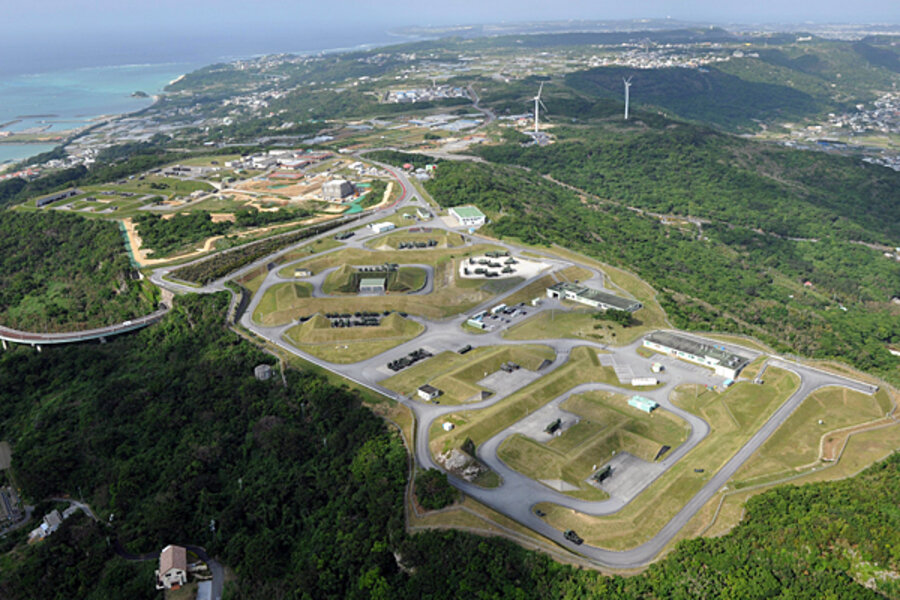Japan braces for North Korean missile launch
Loading...
| Tokyo
Japan and other countries in the Asia-Pacific appear to have failed to persuade North Korea to abort a rocket launch planned for as early as this week. Reports suggest that the region could be further unsettled by a rumored third nuclear weapons test by the regime.
The North insists that the launch, which could come on any morning between April 12 to 16 and will coincide with the centenary of the birth of the country's founder Kim Il-sung on April 15, is designed to put an observation satellite into orbit. Japan, South Korea, and the US, however, say the launch would violate United Nations Security Council resolutions banning the North from engaging in missile development.
"It involves a missile, whichever way you look at it," Sen.Jim Webb (D) of Virginia, who sits on the Senate's foreign relations committee, said in Tokyo last week, adding that it comes "at a time when we were testing the intentions of the North Korean regime. There were negotiations tied to food aid and a clear understanding that [there] not be this kind of activity by North Korea."
Japan has taken a particularly dim view of the launch, threatening to shoot down the rocket or its fragments if it veers into Japanese territory. While doubts exist over its ability to shoot down the rocket, Japan has deployed ground-based Patriot Advanced Capability-3 interceptor missile defense systems on and around the southern island of Okinawa and in Tokyo. The Defense Ministry has also sent three Aegis-equipped destroyers carrying sea-based interceptors to the East China Sea.
Japan has seen this before
In 1998, North Korea sent a missile over Japan's main island before it splashed down in the Pacific Ocean. While North Korea says the expected trajectory of this latest rocket poses no territorial threat, two Japanese airlines said they would alter routes around the Philippines, which lies in the rocket's flight path, during the launch window.
Japan imposed sanctions against the North following the latter's first nuclear test in 2006 and was a keen supporter of tough international measures following a second nuclear test three years later. It has recently extended bilateral sanctions for another year.
"We decided to extend by one year a measure that prohibits North Korean ships from calling at Japanese ports and another measure that bans imports and exports with the North," the chief cabinet secretary, Osamu Fujimura, told reporters last week.
Japan and the North have long had difficult relations. The North has never forgiven Japan for its 1910-1945 occupation of the Korean peninsula, while Japan continues to demand the return of what it claims are at least a dozen citizens who were abducted by North Korean agents during the cold war. The North's former leader, Kim Jong-il, allowed five abductees to return to Japan in 2001. The regime insisted it had abducted 13 Japanese, and that the remaining eight had died.
On Tuesday, space officials in North Korea dismissed claims that the rocket was part of the country's ballistic missile program as "nonsense."
Ryu Kum Chol, deputy director of the space development department of the Korean Committee for Space Technology, said it would require a bigger payload to have any use as a missile.
"Our satellite weighs 100 kilograms. For a weapon, a 100-kilogram payload wouldn't be very effective," he told a group of foreign reporters in the capital Pyongyang. "No country in the world would want to launch a ballistic missile from such an open site.
He added: "All the assembly and preparations of the satellite launch are done."
The regime took the unusual step of inviting foreign journalists to observe the launch site at Tongchang-ri in North Phyongan Province. Reports from the scene said all three stages of the Unha-3 rocket were visible; journalists were also show what officials claimed was a satellite ready for installation.
The launch has practically sunk a deal that would have given the impoverished North access to tens of thousands of tons of US food aid in return for halting its nuclear and missile programs under a deal reached at the end of February.
Preparation for a nuclear test?
Satellite images released this week also show evidence of a new tunnel being dug at a site in Punggye-ri, where nuclear tests were conducted in 2006 and 2009, adding to concerns about the North's activity. The National Institute for Defense Studies in Tokyo has warned that North Korea's progress on nuclear technology, coupled with recent regime change, has increased the risk of conflict breaking out in the region.
Some North Korea experts believe the country could use a possible third nuclear test to put it in a stronger position in any future nuclear negotiations with the US.
"If North Korea conducts a third nuclear test, it will not so much be to demonstrate its power to its people as a way of creating stability for the regime," says Professor Shin Jong-dae at the University of North Korean Studies in Seoul. "More important than that, it would be sending a message to the international community, and in particular to the United States, using pressure to make clear that it wants dialog with the US."
The North has not commented on speculation that it is preparing to conduct a nuclear test, although controlled underground nuclear explosions followed long-range rocket launches in 2006 and 2009.







